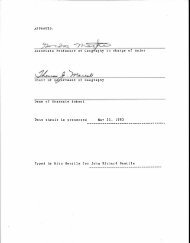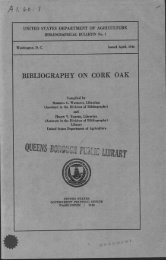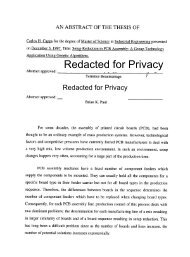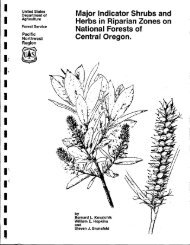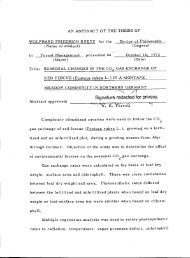In vitro anaerobic trinitrotoluene (TNT) degradation with rumen fluid ...
In vitro anaerobic trinitrotoluene (TNT) degradation with rumen fluid ...
In vitro anaerobic trinitrotoluene (TNT) degradation with rumen fluid ...
Create successful ePaper yourself
Turn your PDF publications into a flip-book with our unique Google optimized e-Paper software.
Fernando et al. (12) used a white-rot fungus, Phanerochaete chrysosporium,<br />
to observe the bio<strong>degradation</strong> of <strong>TNT</strong>. A liquid culture of 35.4 % 1.3 mg/1 "C-<strong>TNT</strong><br />
was degraded to 14CO2 in 18 days; and 18.4 % "C-<strong>TNT</strong> was converted to 14CO2 in 90<br />
days in soil cultures. <strong>In</strong> both cases, 15% of the initial "C-<strong>TNT</strong> remained in the<br />
medium after even 90 daysof incubation. The intermediates proved to be more polar<br />
than <strong>TNT</strong>, but were not identified.<br />
Kulpa et al. (16) investigated <strong>TNT</strong> <strong>degradation</strong> by isolates from <strong>TNT</strong><br />
contaminated soils. <strong>In</strong> the presence of succinate, 3.1% of the initial "C-<strong>TNT</strong> was<br />
converted to 14CO2, and 8-12% was converted to biomass under a cometabolic<br />
process. A major intermediate was produced during eight days incubation, and was<br />
accumulated over a 10-days period <strong>with</strong> small minor intermediates. However, the<br />
intermediate under investigation was not identified.<br />
Schackmann and Muller (26) investigated the reduction of nitroaromatic<br />
compounds <strong>with</strong> Pseudomonas sp. The reduction mechanism was identified as the<br />
aminization of the nitro group on the aromatic ring via nitroso and hydroxyamino<br />
compounds. <strong>In</strong> the case of <strong>TNT</strong>, two MADNT and DAMNT were obtained, but TAT<br />
was not detected. <strong>In</strong> crude cell-free extracts, the enzyme was inactivated by dialysis<br />
and was reactivated by the addition of NADH or NADPH.<br />
Williams et al. (30) investigated the clean-up of sediments contaminated <strong>with</strong><br />
explosives in thermophilic- and mesophilic-aerated static piles. For the breakdown of<br />
<strong>TNT</strong>, half lives were 12 days under thermophilic conditions and 22 days under<br />
mesophilic conditions. It was concluded that composting was a feasible<br />
5





